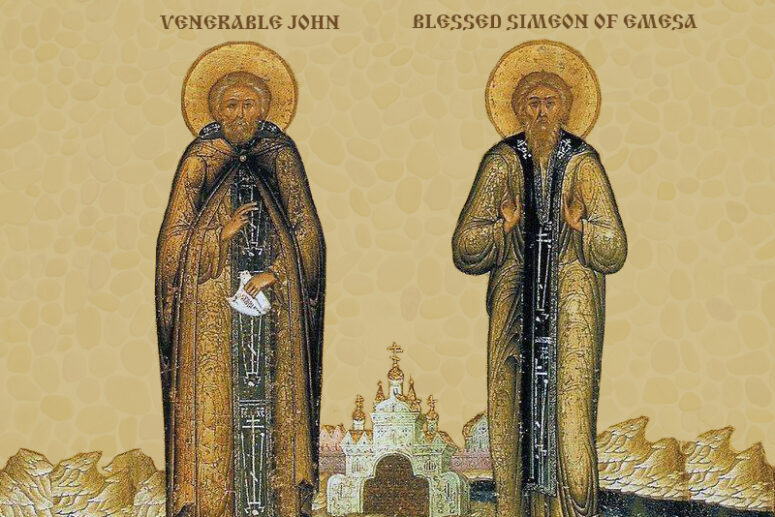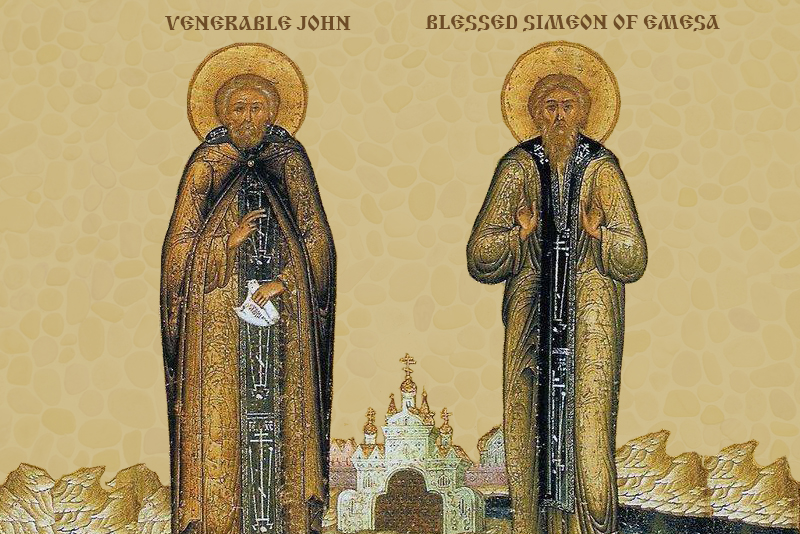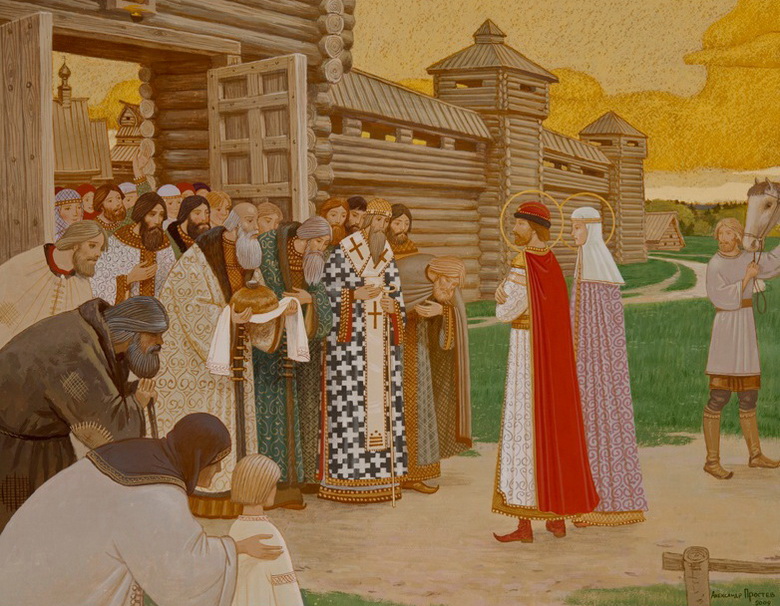
Strong friendship was valued among the Jews, the Gentiles, and among all other nations. In Christianity, where God commanded love and brotherly attitude towards one’s neighbour, a Church rite appeared that blessed a brotherly union between two people. It was called Adelphopoiesis, which literally means, “making brothers” in Greek. People wishing to enter into spiritual kinship made vows of mutual brotherly love and self-sacrifice.
Origins and Appearance of Adelphopoiesis
Fraternization rituals similar to adelphopoiesis existed at one time in the cultures of the peoples of Europe, Asia, and America. In this context, spiritual brotherhood had existed de facto in the Christian Church before the introduction of adelphopoiesis. A few bright examples are the holy martyrs Sergius and Bacchus (3rd century), as well as blessed Simeon of Emesa and venerable John (6th century).
Adelphopoiesis as a church rite is first mentioned in a Greek manuscript dating from the 9th century or earlier. In Slavic sources it appears for the first time in the eleventh century. Adelphopoiesis spread especially widely among the Slavs. Archpriest Konstantin Nikolsky wrote that even the Polish King Casimir IV and the Grand Duke Vasily Vasilyevich of Vladimir and Moscow entered into spiritual brotherhood through this rite (15th century).
Liturgical Rite
The rite of adelphopoiesis largely repeats the rite of the sacrament of Marriage. Those entering into a union stood in the middle of the church opposite the altar. In front of them, a Gospel was placed on an analogion. The initiates put one hand on the Gospel, while holding a candle in the other. The priest girded the brothers with one belt.
After the exclamation, a litany was pronounced, followed by a special prayer, a reading of the Apostle (1 Cor. 12:27, 13:8) and the Gospel (John 17:18-26), a Litany of Fervent Supplication, two more special prayers, a singing of the Lord’s prayer, and a procession around the analogion (as during the sacrament of Baptism or Marriage) with the singing of the troparion “O God of hosts; look down from heaven, and see.” The meaning of the special prayers was primarily in asking for God’s blessing for the brothers’ union in faith and love for all the days of their lives.
Sometimes, after the singing of “Our Father”, the brothers took communion using presanctified Gifts. In this case, appropriate petitions were added to the great litany. The ceremony ended with a fraternal kiss. Notably, the brothers kissed not only each other, but also the priest who performed the rite.
Spiritual Brotherhood among Slavs
At the time when adelphopoiesis appeared on the Slavic lands, the folk ritual of sworn brotherhood was still widespread there. This caused some of the folk traditions to become adopted by the church environment. Some of them fully corresponded to the spirit of Christian brotherhood, while others contradicted the original meaning of adelphopoiesis.
For example, Slavs entering into a fraternal union exchanged their baptismal crosses, which in itself is an appropriate symbolic action. However, unlike the indissoluble union declared through adelphopoiesis, the spiritual kinship bound by a folk ritual could be “terminated” by returning the crosses to each other, saying particular words.
Besides, there were conflicts between sworn brotherhood and the sacrament of Marriage. Cases are known when southern Slavs used the former to avoid an unwanted marriage. A couple married against their will would perform a certain ritual entering a spiritual kinship to avoid marital relations.
This suggests that the folk ritual continued to exist in parallel with the church rite; moreover, it could be perceived as superior to the church sacrament of Marriage. This means that people of the opposite sex could join the folk spiritual kinship, while the church blessing extended strictly to brotherly unions between persons of the same sex (usually men).
Thus, due to the existence of a parallel secular rite and its influence, the Slavs often distorted the original essence of adelphopoiesis.
Abolition
The Greeks also distorted the essence of adelphopoiesis, although for completely different reasons. Similarities between adelphopoiesis and the sacrament of Marriage led to the false idea that those who entered the former received the same rights and obligations as those getting married.
More specifically, the Greeks believed that a spiritual brother was entitled to enter into an inheritance without a will. In addition, spiritual brotherhood was considered an obstacle to a marriage of one spiritual brother or his closest relative with relatives of the other.
Such an interpretation of the rite did not correspond to its ecclesiastical understanding. On top of that, it became in fact a pretext for breaking the law. That is why civil authorities also opposed adelphopoiesis.
After the 13th century, prohibitions of adelphopoiesis gradually began to appear in Kórmchaia Book and the Nomocanon. Nevertheless, the rite of adelphopoiesis remained in Russian service books until the 19th century, although with a note saying that it was forbidden to perform it. Despite the ban, adelphopoiesis was still performed in the churches of Montenegro and Serbia until the 19th century.
Conclusion
Adelphopoiesis is an example of a good tradition, which unfortunately was lost. There is nothing wrong in the spiritual brotherhood as such; the prohibition is due to its abuse and misinterpretation. The Slavs often neglected spiritual kinship, terminated it and could not perceive adelphopoiesis undistorted. The Greeks went to the other extreme, wishing to get material benefit from spiritual kinship.
We need to understand the reasons for the prohibition and realize that the church order is forbidden, and not a close spiritual connection between two persons. After all, the saints mentioned at the beginning of the article were not familiar with the rite of adelphopoiesis, but that did not prevent them from becoming models of what spiritual brotherhood should be like.




